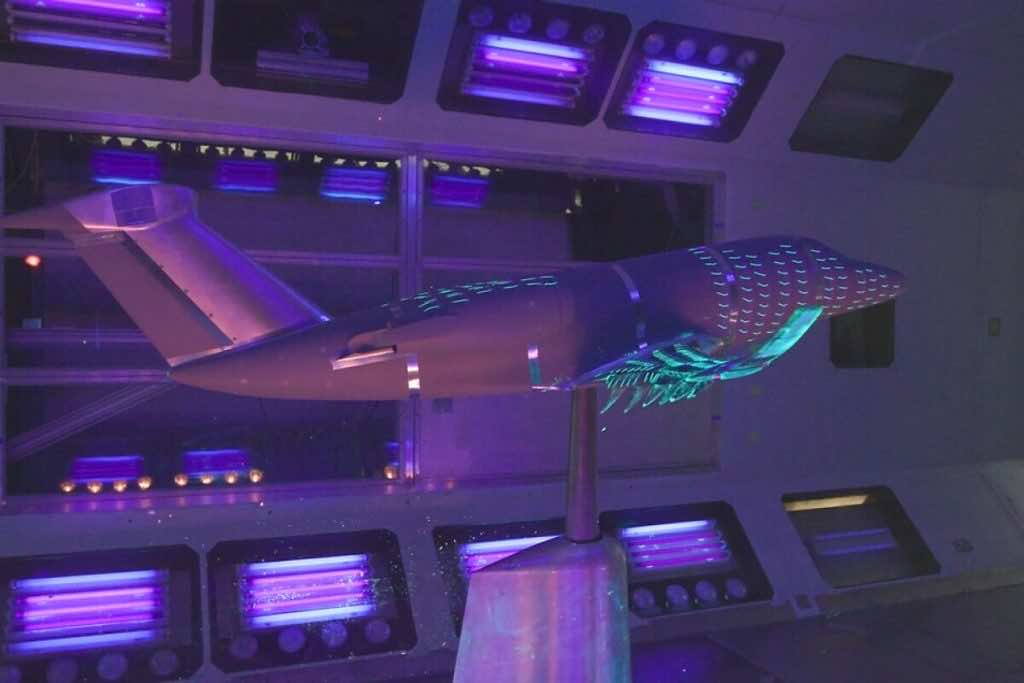Airbus has finished wind tunnel testing of its eXtra Performance Wing prototype as part of its ongoing efforts to rapidly test and develop breakthrough technologies that will decarbonize the aviation sector. Originally tested at a relatively small scale through another Airbus project, AlbatrossONE, which evaluated semi-aeroelastic hinged wings that, like the seabird, decrypted during the flight when undergoing wind gusts or turbulence, the eXtra Performance Wing will also investigate onboard technologies such as gust detectors, pop-up spoiler warnings, and multipurpose trailing edges to allow active wing authority. The Airbus low-speed wind tunnel in Filton, near Bristol, simulates aircraft take-off and landing wind speeds, although it is also used by outside organizations to test F1 cars, ship radar systems, Urban Air Mobility vehicles, and more traditional aircraft.
The eXtra Performance Wing prototype is housed within Airbus UpNext, a wholly-owned Airbus corporation established to promote the implementation of future developments by constructing demonstrators at speed and scale in order to determine, advance, and legitimize prospective innovative goods/processes incorporating drastic scientific breakthroughs. Nature has long influenced aircraft design, from the basic aspect ratio of a flying vehicle to effective wingtips. This method, known as biomimetics, has resulted in a slew of fascinating aerospace projects, including Airbus’ latest Fello’fly idea and the creation of shark skin-like fuselage covers for airplanes. Semi-elastic or ‘flapping’ wings mimic the albatross’ wingtips. The bird can negotiate sustained winds by unlocking its shoulder, allowing it to travel great distances and cut through disturbances. “Semi-aeroelastic hinged wing-tips allow an aircraft to “surf” through gusty winds without passing the bending loads (i.e., external force that creates bending moment within a body) to the leading edge of the wing,” said AlbatrossONE Chief Engineer James Kirk.
Airbus thinks that this improvement has the opportunity to profoundly cut fuel consumption and CO2 emissions. As Airbus Airbus Semi-Aeroelastic Hinge Project Leader Tom Wilson explains, it would also enable airplanes to have far larger wingspans. “Lift-induced drag contributes for around 40% of a big aircraft’s drag.” This number, however, decreases as the wingspan expands. The span of the semi-aeroelastic hinged wingtips might be expanded beyond 50 meters without adding wing weight.” Finally, will we soon witness flapping wings on passenger airliners? Most likely not. While this concept design establishes the framework for larger-scale development of the concept, there still is a lot of technical work that needs to be done before the technology is demonstrated to be a realistic alternative. Airbus aims to have some of those innovations off the ground soon by examining the prospects of biomimicry at its Filton wind tunnel near Bristol.

